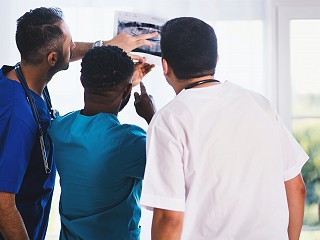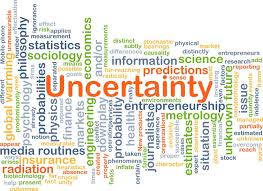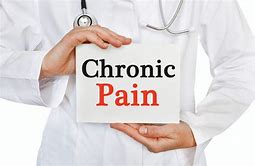
COVID-19: Going Back to School
During these uncertain times, we are all confronted with challenges, concerns, and many questions. As the school year approaches, parents are asking: What is best for our children? Will our children go back to the classroom in the fall? And, if so, how can we make their return a safe one? Every community in all areas of the country have been addressing these questions and developing plans with guidance from federal, state and local health departments; taking into account recommendations and guidelines from organizations such as the Centers for Disease Control and Prevention (CDC) and the American Academy of Pediatrics (AAP).
“The primary objective for all of us it to ensure that every child can return safely and confidently to school,” said Alyssa Pfeifer-Rentmeester, PA-C, Sheboygan Pediatrics. State of Wisconsin Mandate: Under this order, Wisconsin residents ages five and older are required to wear a face covering when they are indoors or in an enclosed space with anyone outside their household or living unit. Face coverings are strongly recommended if you are outdoors and maintaining physical distancing is not possible. A frequently asked questions (FAQ) document is available here.
On a Local Level In a recent letter to parents, the Sheboygan Area School District announced it is planning to reopen the schools in the fall. Its Department of Public Instruction, based on guidance from federal, state, and local health departments is developing three reopening options simultaneously:
- All Online
- Hybrid/Split Schedule
- New Normal – Traditional School Model The letter ensures, that all three scenarios will be ready to implement at any given time and that they will have the ability to move between the options if or when necessary. Plans are taking shape and final decisions are nearly complete. For the most current information on the SASD school re-opening plans visit, https://www.sheboygan.k12.wi.us/news_detail.cfm?newsid=5577&detailid=656319. In its most recent online messaging, the Sheboygan Area School District said, Please, take some time to click through each of comprehensive schools plans and understand how they impact your child. Schools will also be reaching out to families with more details.
Due to the ever-changing nature of this pandemic, we highly recommend that families have plans in place if a classroom, school, or the full district will need to move to an all virtual model. Last spring, we had to make the transition extremely quickly, so families should be prepared for the possibility this could happen again. For more information, visit https://www.sheboygan.k12.wi.us/families/fall-2020-reopening-plan.cfm
“At Sheboygan Pediatrics, we follow the guidance of the AAP, whose recommendations are based on what pediatricians and infectious disease specialists know about COVID-19 and kids,” said Pfeifer-Rentmeester. While there are many debates around this topic, Pfeifer-Rentmeester tells us that, “It is important to understand that schools provide more than academics.” According to the AAP, “Schools are fundamental to child and adolescent development and well-being and provide our children and adolescents with academic instruction, social and emotional skills, safety, reliable nutrition, physical/speech and mental health therapy and opportunities for physical activity, among other benefits.” They advocate that all policy considerations for the coming school year should start with a goal of having students physically present in school. In addition, the evidence to date suggests that children and adolescents are less likely to have symptoms or severe disease from infection and appear less likely to become infected or spread the virus.
“Missing school can have serious consequences for child health and wellbeing, particularly for students with disabilities or with special healthcare needs. Students who are physically in school learn social and emotional skills, get healthy meals and exercise, and mental health support. Schools also play an important role in identifying and addressing learning deficits, physical abuse, substance use, depression, and suicidal ideation. These are all critical reasons for getting children back to school,” said Sally Goza, MD, American Academy of Pediatrics President.
School re-opening plans across the country are being developed with great attention to detail. “Decisions for each school district are not made lightly. Throughout the year, school districts will continue monitoring the community COVID-19 conditions and will follow the trends on both the state and national levels,” said Pfeifer-Rentmeester. As a result, there will not be a one-size-fits-all model. And, the model put in place in the fall may not be the model practiced later in the term.
Teachers are prepared to start the school year with more than one reopening plan and will work with students and their parents to ensure that if the school needs to move into a different teaching plan, everyone is prepared.
“Your child(ren) have endured a significant life event and you, as parents, have guided them through it admirably,” said Pfeifer-Rentmeester. Now, as the school year approaches the most important thing parents can do is to educate themselves on school reopening plans so they can better prepare their children for the new school year. No doubt, children returning to school will face extreme changes and the more informed and prepared they are, the better they will handle it.
“It is important that parents educate themselves on what changes to expect for the upcoming school year before talking with their child. Taking time to process the information and work through any frustrations, anxieties and concerns related to the pandemic are great first steps in navigating the conversation around the return to school this fall. Maintaining an open style of communication and having a willingness to listen and discuss their child’s concerns will help to ease and mitigate excess fear and worry. Remember, the plans in place are designed to keep children safe and presenting the information in a calm and positive manner will be key in helping them return to the classroom more confident and with less stress,” said Pfeifer-Rentmeester.
Pfeifer-Rentmeester also recommends that parents make sure their children get their back to school physicals and catch-up on their immunizations, if necessary. “If you have questions or concerns about your child’s health, this would be a good time for that conversation.”
Parents, educators, and pediatricians all share the same unified goal of wanting children to return to school this fall. As schools across the country open their doors, it is important to recognize the extensive research, community participation, and parent input that has occurred in the process of designing teaching platforms that are both safe and feasible, while providing the best learning experience for the youth of their communities.



